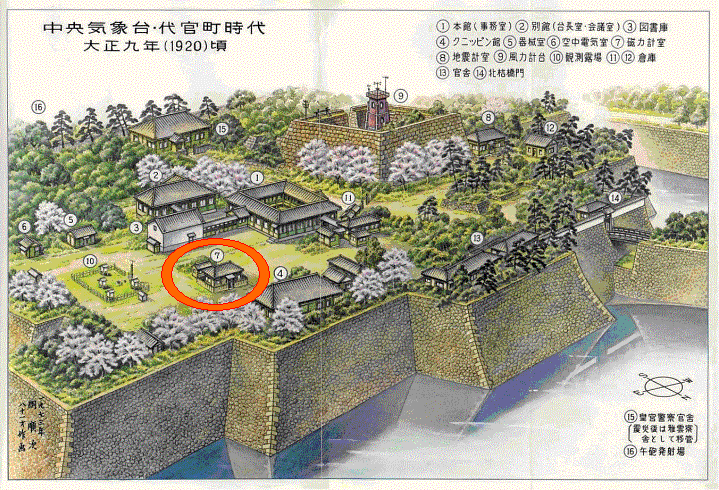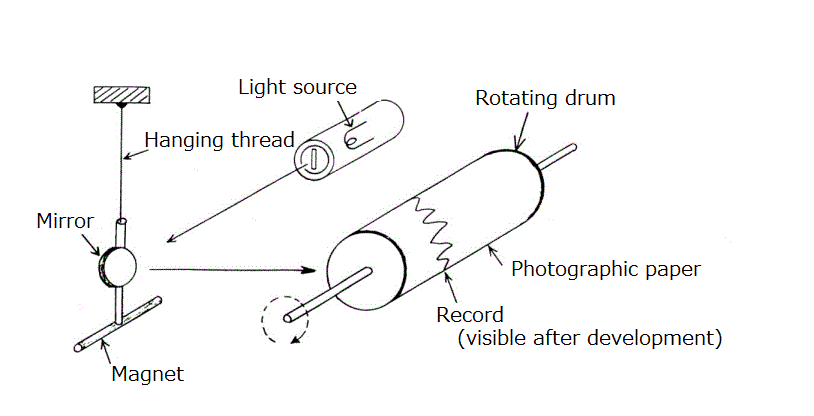35°41′N, 139°45′E, 21 m above sea level
(Central Meteorological Observatory, by Kitahanebashi Gate in Main Citadel of Edo Castle)
The site’s Absolute House had a roof that opened in the middle to allow azimuth measurement with Polaris sighting. A small window on the north side provided a view of the golden cross of Nikolai Cathedral in Surugadai as an azimuth mark. The Variation House, 18 m east of the Absolute House, was a wooden double-roofed structure with a 3 meter-deep basement. Its interior was divided by a staircase into an eastern room with an autograph variometer and a western room with an identical one for direct visual reading.

| 1. | Main House (Office) |
| 2. | Annex (Director-General Room, Meeting Room) |
| 3. | Library |
| 4. | Knipping Residence |
| 5. | Instrument House |
| 6. | Atmospheric Electricity House |
| 7. | Magnetometer House |
| 8. | Seismometer House |
| 9. | Anemometer Tower |
| 10. | Observation field |
| 11. | Storage |
| 12. | Storage |
| 13. | Official residence |
| 14. | Kitahanebashi Gate |
| 15. | Official residence of the Imperial Guard (Transfer of Control as Dormitory) |
| 16. | Firing range of noon gun |
The instruments for absolute measurement were Tanakadate magnetometers (theodolite) for D and H observation and a Casella dip circle for I observation.
Mascart variometers were used for the monitoring of D, H and Z, all of which relied on magnets. The magnet for D was suspended by a single string and that for H by two. The instrument for Z was a balance type, with a magnet held horizontally.

The absolute measurement for H was based on the Gauss-Lamont method, with values calculated from oscillation (M H) and deflection (M/H) of magnets with moment H. D and I were based on the same principle with declinometer/inclinometer and dip circle data, respectively, with declination and inclination determined from direct reading of a freely rotating magnetic needle. Observation was carried out monthly from 1897 to 1901 and twice a month from 1902 onward.
Recording was largely as per that for the suspended magnet variometer used until relatively recently, with light from a paraffin lamp shone onto a mirror attached to the suspended/balanced magnet system and the reflection photographically recorded using bromide.

The emitted light is reflected by a mirror that moves together with a magnet suspended on a string, thus projecting a light spot onto the drum, which makes one rotation per day. Magnet displacement is thus magnified to represent geomagnetic field variations.
Copyright (c) Kakioka Magnetic Observatory, Japan Meteorological Agency. All rights reserved.
